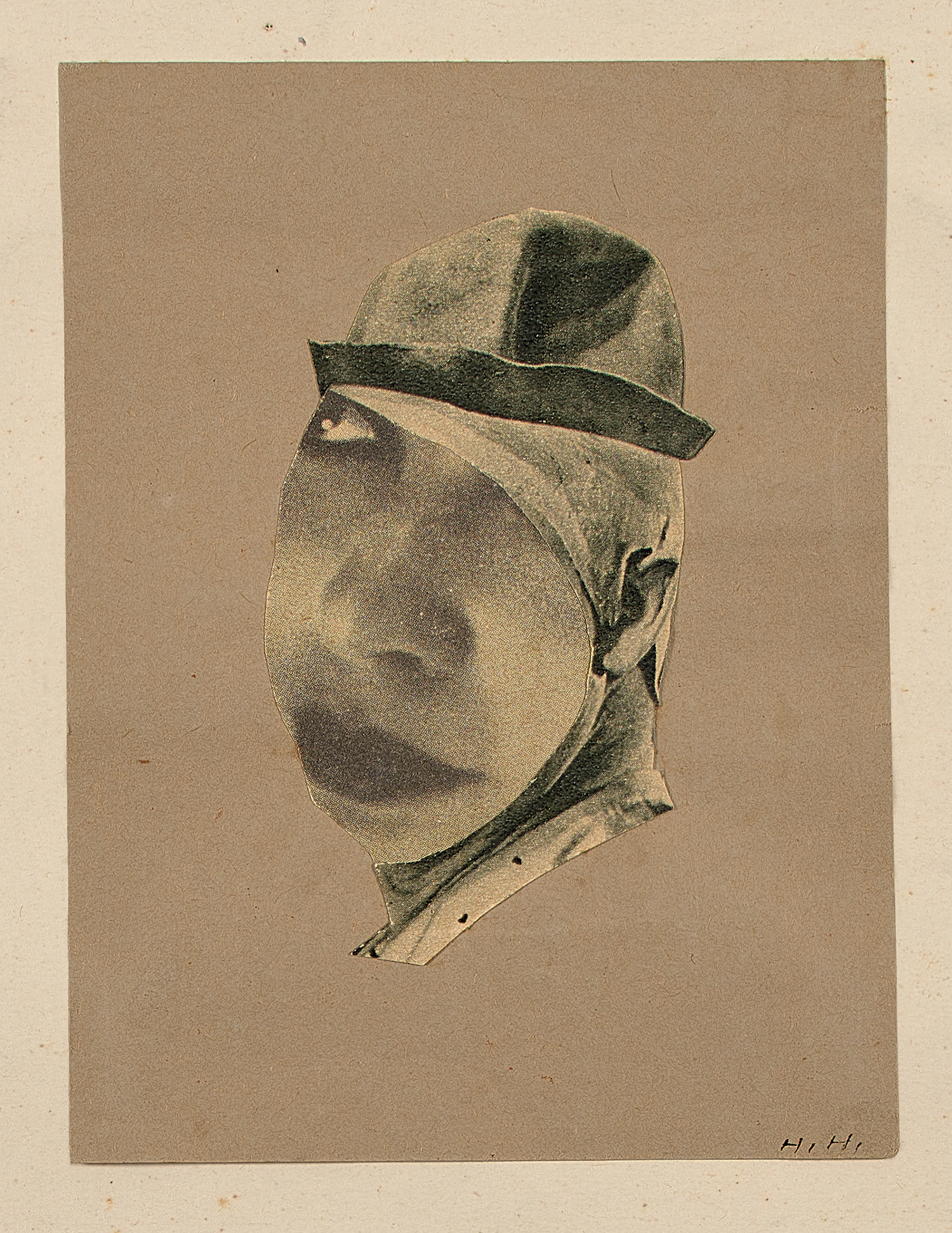

16
Hannah Höch
Clown
1924
Unique collage of halftone and rotogravure elements.
4 5/8 x 3 3/4 in. (11.7 x 9.5 cm)
Initialed in ink on the recto; signed, titled and annotated in pencil on the reverse of the second mount. Accompanied by numerous exhibition labels.
Full-Cataloguing
Hannah Höch was an originator of the photomontage and helped define it as an expressive and effective tool for social critique. As early as 1916 she began assembling cutout images from printed media along with her lover Raoul Hausmann, one of the founders of the iconoclastic Dada movement. She became the only woman artist associated with Berlin Dadaists and showed work in their inaugural exhibition in 1916 and in the influential Erste Internationale Dada-Messe of 1920. Her work was included in the groundbreaking Film und Foto exhibition in 1929.
As the 1920s progressed, Höch’s work increasingly addressed the role of the ‘new woman’ in Weimer Germany. While women were accorded more independence, Höch’s work undermines the idea that they had achieved anything close to equality with men. She found much of her source material at Ullstein Verlag, a publisher of women’s magazines, where she worked between 1916 and 1926. She thus used images from the mass media to critique and satirize the stereotypes it promoted. As other women artists—Cindy Sherman and Barbara Kruger among them—would do later in the century, Höch raided popular culture for her subject matter, creating sometimes playful and sometimes biting commentary on feminine stereotypes.
In the unique photomontage offered here Höch draws an analogy between the ‘new woman’ and a clown. In it, the cheerful face of woman is enclosed within a clown’s costume, making her into a farcical figure. As Höch authority Maud Lavin notes, ‘the clown guise masks the pathos behind the role of the comedienne’ (p. 128).
As the 1920s progressed, Höch’s work increasingly addressed the role of the ‘new woman’ in Weimer Germany. While women were accorded more independence, Höch’s work undermines the idea that they had achieved anything close to equality with men. She found much of her source material at Ullstein Verlag, a publisher of women’s magazines, where she worked between 1916 and 1926. She thus used images from the mass media to critique and satirize the stereotypes it promoted. As other women artists—Cindy Sherman and Barbara Kruger among them—would do later in the century, Höch raided popular culture for her subject matter, creating sometimes playful and sometimes biting commentary on feminine stereotypes.
In the unique photomontage offered here Höch draws an analogy between the ‘new woman’ and a clown. In it, the cheerful face of woman is enclosed within a clown’s costume, making her into a farcical figure. As Höch authority Maud Lavin notes, ‘the clown guise masks the pathos behind the role of the comedienne’ (p. 128).